Experimental Study and Modelling of the Thermal Conductivity of Sandy Soils of Different Porosities and Water Contents
Abstract
:1. Introduction
2. Experimental Study
2.1. Methodology
2.2. Materials and Setup
2.3. Experimental Results
3. Modelling
3.1. Previous Research
3.2. Comparison of Two Major Types of Empirical Model
3.3. A Unified Thermal Conductivity and Water Retention Model
4. Conclusions
- The needle probe method provides a convenient and accurate approach to measure unsaturated soil thermal conductivity.
- At a certain water content, the thermal conductivity of sandy soil decreases with increasing porosity due the increase in the air content. At a certain porosity, the thermal conductivity of sandy soil increases with the water content due to the decrease in the air content. Capillary condensation plays an important role on the thermal conductivity at low water content and low porosity with small pore sizes because the condensed water will affect the ratio of the water volume to total pore surface area.
- There are two major types of empirical model proposed, which can be generalised as representing an exponential function and power function, respectively. The characterised exponential function has showed a good result for the thermal conductivity of soils of a certain porosity at varied water contents. However, the power function has showed a better performance for the conditions of both varied water contents and porosities.
- Intrinsically, the thermal conductivity at varied water content and porosity is related to the pore size distribution. Due to the intrinsic relation and the dependence on similar factors, both the thermal conductivity and water retention characteristics of unsaturated soils can be described using a unified model, which has demonstrated good accuracy.
Acknowledgments
Author Contributions
Conflicts of Interest
References
- Yuan, Y.; Jib, H.; Duc, Y.; Cheng, B. Semi-analytical solution of roof-on-grade attached underground engineering envelope. Build. Environ. 2008, 43, 1138–1146. [Google Scholar] [CrossRef]
- Bai, Y.; Niedzwecki, J.M. Modeling deepwater seabed steady-state thermal fields around buried pipeline including trenching and backfill effects. Comput. Geotech. 2014, 61, 221–222. [Google Scholar] [CrossRef]
- Vipulanandan, C.; Kulkarni, S.P. Shear bonding and thermal properties of particle-filled polymer grout for pipe-in-pipe application. J. Mater. Civ. Eng. 2007, 19, 583–590. [Google Scholar] [CrossRef]
- Vollaro, R.; Fontana, L.; Vallati, A. Experimental study of thermal field deriving from an underground electrical power cable buried in non-homogeneous soils. Appl. Therm. Eng. 2014, 62, 390–397. [Google Scholar] [CrossRef]
- Al-Saud, M.S.; El-Kady, M.A.; Findlay, R.D. A new approach to underground cable performance assessment. Electr. Power Syst. Res. 2008, 78, 907–918. [Google Scholar] [CrossRef]
- Mimouni, T.; Dupray, F.; Laloui, L. Estimating the geothermal potential of heat-exchanger anchors on acut-and-cover tunnel. Geothermics 2014, 51, 380–387. [Google Scholar] [CrossRef]
- García-Gil, A.; Vázquez-Suñe, E.; Alcaraz, M.M.; Juan, A.S.; Sánchez-Navarro, J.A.; Montlleó, M.; Rodríguez, G.; Lao, J. GIS-supported mapping of low-temperature geothermal potential taking groundwater flow into account. Renew. Energy 2015, 77, 268–278. [Google Scholar] [CrossRef]
- Tye-Gingras, M.; Gosselin, L. Generic ground response functions for ground exchangers in the presence of groundwater flow. Renew. Energy 2014, 72, 354–366. [Google Scholar] [CrossRef]
- Mohamed, M.; El-Kezza, O.; Abdel-Aal, M.; Schellart, A.; Tait, S. Effects of coolant flow rate, groundwater table fluctuations and infiltration of rainwater on the efficiency of heat recovery from near surface soil layers. Geothermics 2015, 53, 171–182. [Google Scholar] [CrossRef]
- Nakhaei, M.; Šimůnek, J. Parameter estimation of soil hydraulic and thermal property functions for unsaturated porous media using the HYDRUS-2D code. J. Hydrol. Hydromech. 2014, 62, 7–15. [Google Scholar]
- Bozzoli, F.; Pagliarini, G.; Rainieri, S.; Schiavi, L. Estimation of soil and grout thermal properties through a TSPEP (two-step parameter estimation procedure) applied to TRT (thermal response test) data. Energy 2011, 36, 839–846. [Google Scholar] [CrossRef]
- Abuel-Naga, H.M.; Bergado, D.T.; Bouazza, A.; Pender, M.J. Thermal conductivity of soft Bangkok clay from laboratory and field measurements. Eng. Geol. 2009, 105, 211–219. [Google Scholar] [CrossRef]
- O’Donnell, J.A.; Romanovsky, V.E.; Harden, J.W.; McGuire, D.A. The Effect of Moisture Content on the Thermal Conductivity of Moss and Organic Soil Horizons from Black Spruce Ecosystems in Interior Alaska. Soil Sci. 2009, 174, 646–651. [Google Scholar] [CrossRef]
- Tang, A.; Cui, Y.; Le, T. A study on the thermal conductivity of compacted bentonites. Appl. Clay Sci. 2008, 41, 181–189. [Google Scholar] [CrossRef] [Green Version]
- Loikos, W.J. Pore-scale model for thermal conductivity of unsaturated sands. Geotech. Geol. Eng. 2015, 33, 179–192. [Google Scholar] [CrossRef]
- Tarnawski, V.R.; McCombie, M.L.; Momose, T.; Sakaguchi, I.; Leong, W.H. Thermal Conductivity of Standard Sands. Part III. Full Range of Saturation. Int. J. Thermophys. 2013, 34, 1130–1147. [Google Scholar] [CrossRef]
- Smits, K.M.; Sakaki, T.; Limsuwat, A.; Illangasekare, T.H. Thermal Conductivity of Sands under Varying Moisture and Porosity in Drainage–Wetting Cycles. Vadose Zone J. 2010, 9, 172–180. [Google Scholar] [CrossRef]
- Chen, S. Thermal conductivity of sands. Heat Mass Transf. 2008, 44, 1241–1246. [Google Scholar] [CrossRef]
- Woodside, W.; Messmer, J.H. Thermal Conductivity of Porous Media. I. Unconsolidated Sands. J. Appl. Phys. 1961, 32, 1688. [Google Scholar] [CrossRef]
- De Vries, D.A. Thermal properties of soils. In Physics of Plant Environment; van Wijk, W.R., Ed.; North Holland Publishing Company: Amsterdam, The Netherlands, 1963. [Google Scholar]
- Likos, W.J.; Olson, H.S.; Jaafar, R. Comparison of Laboratory Methods for Measuring Thermal Conductivity of Unsaturated Soils. In Proceedings of the GeoCongress, Oakland, CA, USA, 25–29 March 2012; pp. 4366–4376.
- Low, J.E.; Loveridge, F.A.; Powrie, W. Measuring soil thermal properties for use in energy foundation design. In Proceedings of the 18th International Conference on Soil Mechanics and Geotechnical Engineering, Paris, France, 2–6 September 2013; pp. 3375–3378.
- Low, J.E.; Loveridge, F.; Powrie, W. Thermal conductivity of soils by the needle probe method, for energy foundation applications. In Proceedings of the 32nd International Thermal Conductivity Conference and 20th International Thermal Expansion Symposium, Lafeyette, IN, USA, 27 April–1 May 2014; p. 11.
- Alrtimi, A.; Rouainia, M.; Manning, D.A.C. An improved steady-state apparatus for measuring thermal conductivity of soils. Int. J. Heat Mass Transf. 2014, 72, 630–636. [Google Scholar] [CrossRef]
- Standard for Hydrogeological Investigation of Water-Supply (GB 50027–2001); China Planning Press: Beijing, China, 2001.
- Dong, Y.; McCartney, J.S.; Lu, N. Critical Review of Thermal Conductivity Models for Unsaturated Soils. Geotech. Geol. Eng. 2015, 33, 207–221. [Google Scholar] [CrossRef]
- Jougnot, D.; Revil, A. Thermal conductivity of unsaturated clay-rocks. Hydrol. Earth Syst. Sci. 2010, 14, 91–98. [Google Scholar] [CrossRef]
- Tarnawski, V.R.; Leong, W.H. Advanced Geometric Mean Model for Predicting Thermal Conductivity of Unsaturated Soils. Int. J. Thermophys. 2016, 37, 18. [Google Scholar] [CrossRef]
- Ghanbarian, B.; Daigle, H. Thermal conductivity in porous media: Percolation-based effective-medium approximation. Water Resour. Res. 2016, 52, 295–314. [Google Scholar] [CrossRef]
- Lehmann, P.; Stähli, M.; Papritz, A.; Gygi, A.; Flühler, H. A Fractal Approach to Model Soil Structure and to Calculate Thermal Conductivity of Soils. Transp. Porous Media 2003, 52, 313–332. [Google Scholar] [CrossRef]
- Xiao, B.; Yang, Y.; Chen, L.X. Developing a novel form of thermal conductivity of nanofluids with Brownian motion effect by means of fractal geometry. Powder Technol. 2013, 239, 409–414. [Google Scholar] [CrossRef]
- Cai, G.; Zhang, T.; Puppala, A.J.; Liu, S. Thermal characterization and prediction model of typical soils in Nanjing area of China. Eng. Geol. 2015, 191, 23–30. [Google Scholar] [CrossRef]
- Nikiforova, T.; Savytskyi, M.; Limam, K.; Bosschaerts, W.; Belarbi, R. Methods and Results of Experimental Researches of Thermal Conductivity of Soils. Energy Procedia 2013, 42, 775–783. [Google Scholar] [CrossRef]
- Farouki, O.T. Thermal Properties of Soils; Trans Tech Publications: Rockport, MA, USA, 1986. [Google Scholar]
- Misra, A.; Becker, B.R.; Fricke, B.A. A Theoretical Model of the Thermal Conductivity of Idealized Soil. HVAC R Res. 1995, 1, 81–96. [Google Scholar] [CrossRef]
- Kersten, M.S. Laboratory Research for the Determination of the Thermal Properties of Soils; Technical Report 23; Research Laboratory Investigations, Engineering Experiment Station, University of Minnesota: Minneapolis, MN, USA, 1949. [Google Scholar]
- Johansen, O. Thermal Conductivity of Soils. N.H. CRREL Draft English Translation 637. Ph.D. Thesis, University of Trondheim, Trondheim, Norway, 1975. [Google Scholar]
- Cote, J.; Konrad, J.M. A generalized thermal conductivity model for soils and construction materials. Can. Geotech. J. 2005, 42, 443–458. [Google Scholar] [CrossRef]
- Lu, S.; Ren, T.; Gong, Y.; Horton, R. An improved model for predicting soil thermal conductivity from water content at room temperature. Soil Sci. Soc. Am. J. 2007, 71, 8–14. [Google Scholar] [CrossRef]
- Ould-Lahoucine, C.; Sakashita, H.; Kumada, T. Measurement of thermal conductivity of buffer materials and evaluation of existing correlations predicting it. Nucl. Eng. Des. 2002, 216, 1–11. [Google Scholar] [CrossRef]
- Donazzi, F.; Occhini, E.; Seppi, A. Soil Thermal and hydrological characteristics in designing underground. Proc. Inst. Electr. Eng. 1979, 126, 506–516. [Google Scholar] [CrossRef]
- Wang, Y.; Wu, G. Understanding and modelling of soil-water characteristic curves. Chin. J. Geotech. Eng. 2008, 30, 1282–1290. [Google Scholar]
- Wang, Y.; Grove, S.M.; Anderson, M.G. A physical-chemical model for the static water retention characteristic of unsaturated porous media. Adv. Water Resour. 2008, 31, 723–735. [Google Scholar] [CrossRef]
- Wang, Y. Phase deterministic modelling of water retention in unsaturated porous media and its potential in dynamic unsaturated flow application. J. Porous Media 2010, 13, 261–270. [Google Scholar] [CrossRef]
- Wang, Y.; Wang, X.Y.; Scholz, M.; Ross, D.K. A physico-chemical model for the water vapour sorption isotherm of hardened cementitious materials. Constr. Build. Mater. 2012, 35, 941–946. [Google Scholar] [CrossRef]
- McCash, E.M. Surface Chemistry; Oxford University Press: Oxford, UK, 2001. [Google Scholar]
- Tuller, M.; Or, D.; Dudley, L.M. Adsorption and capillary condensation in porous media: Liquid retention and interfacial configuration in angular pores. Water Resour. Res. 1999, 35, 1949–1964. [Google Scholar] [CrossRef]
- Derjaguin, B.; Obuchov, E. Acta Physicochimica U.R.S.S.; Academy of Sciences of the U.S.S.R.: Moskva, Russia, 1936. [Google Scholar]
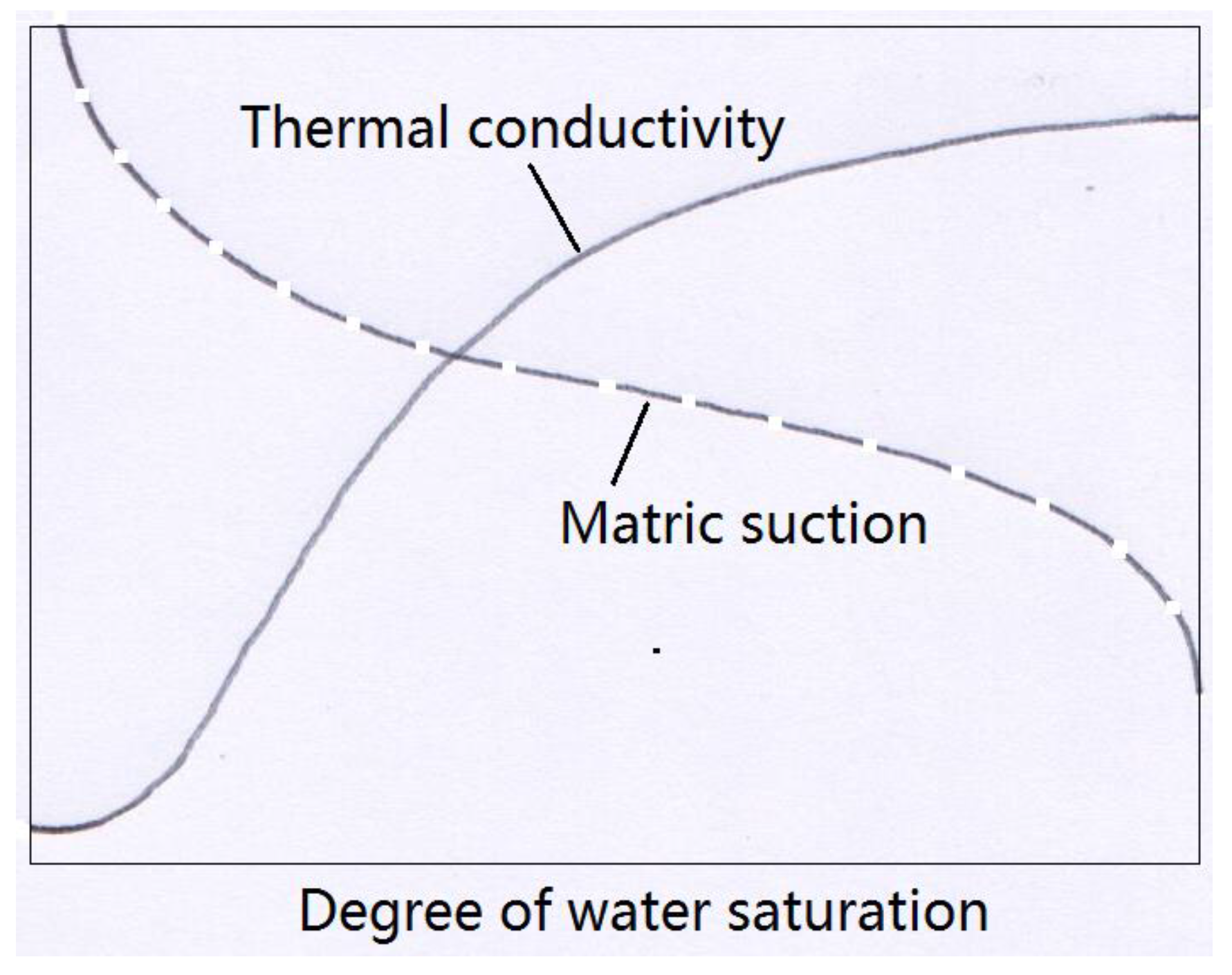
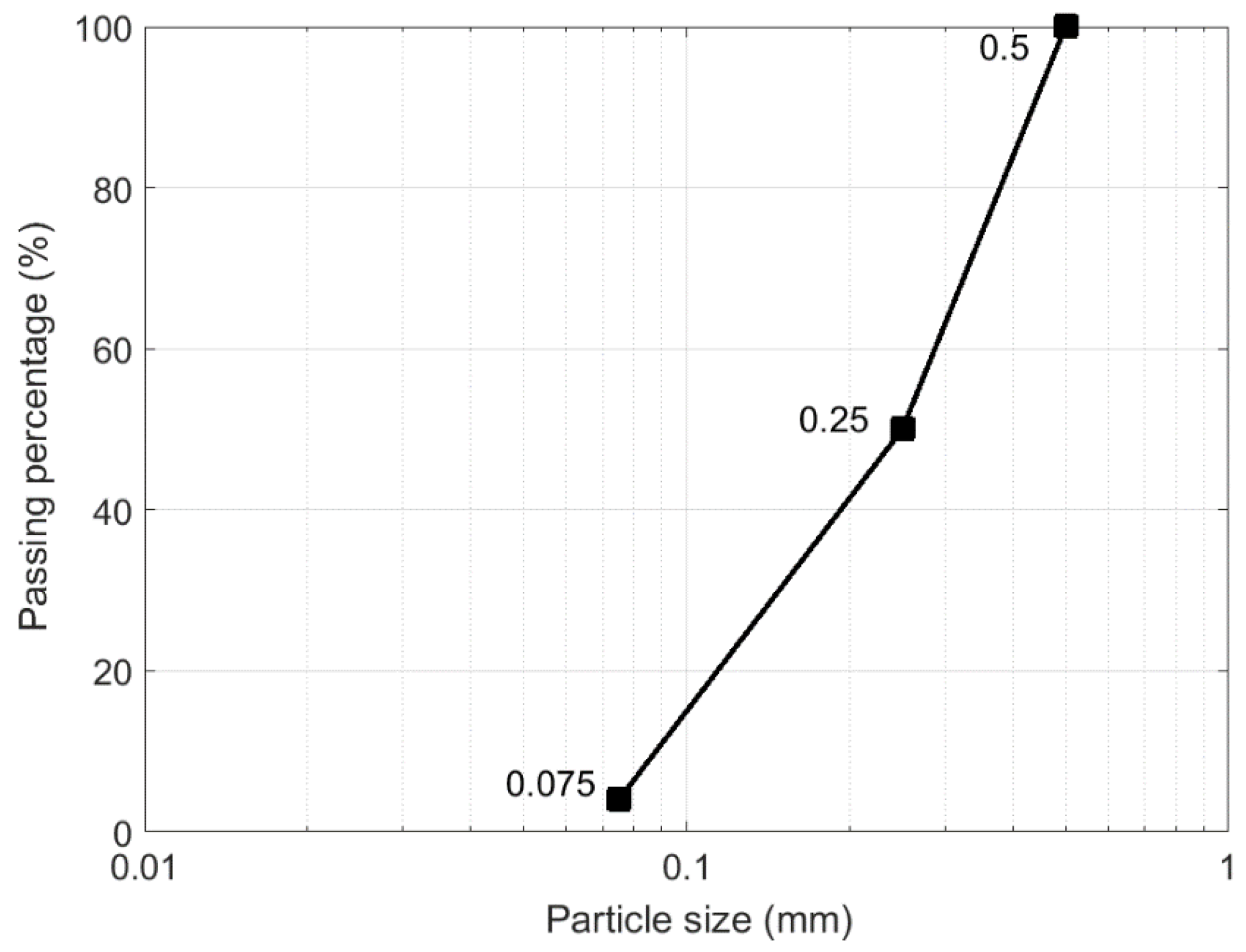
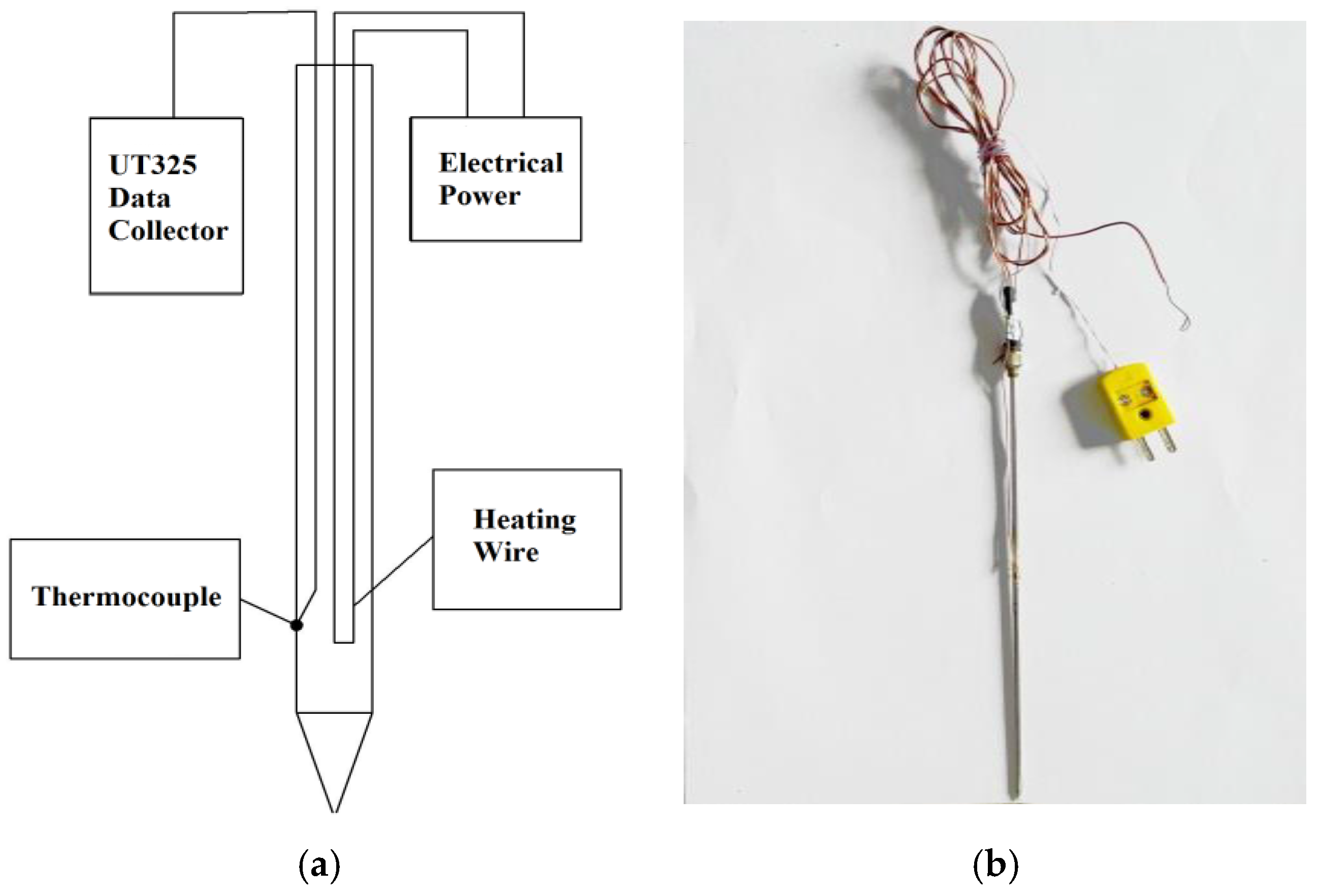
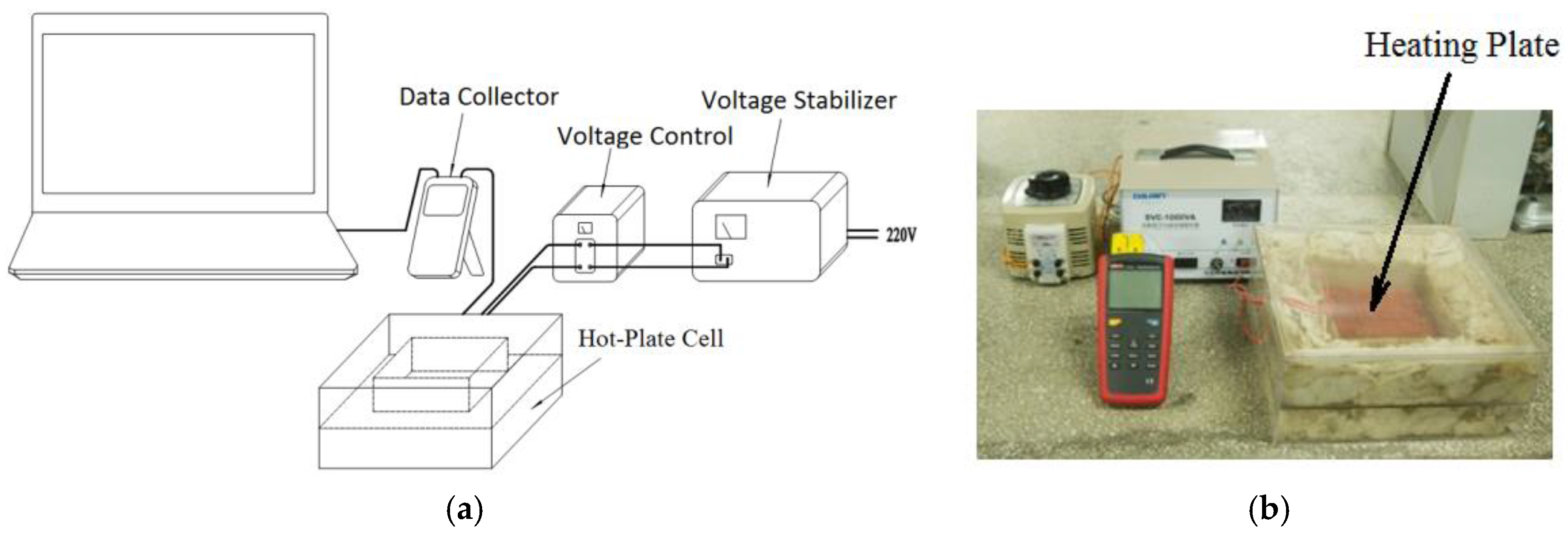
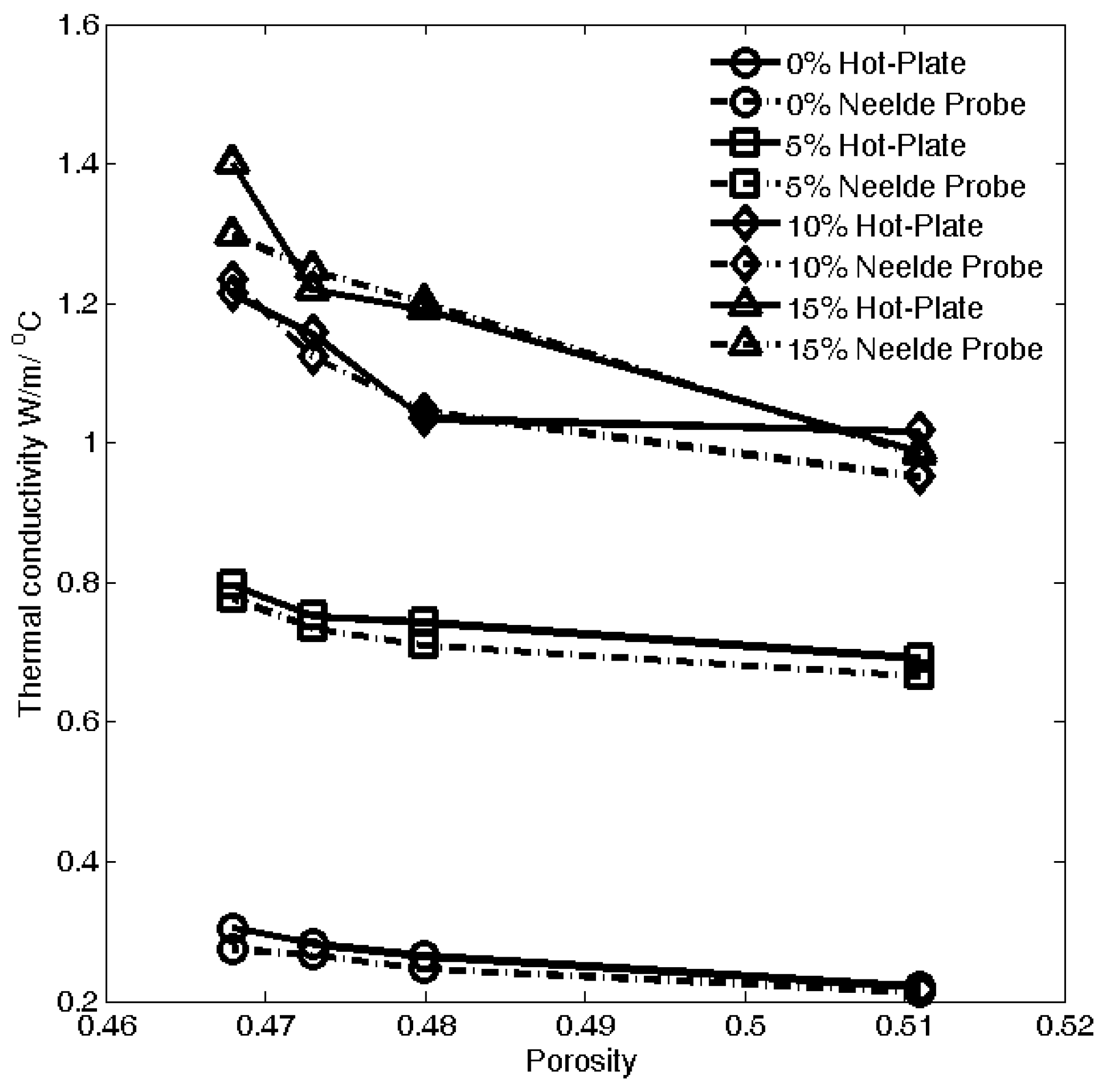
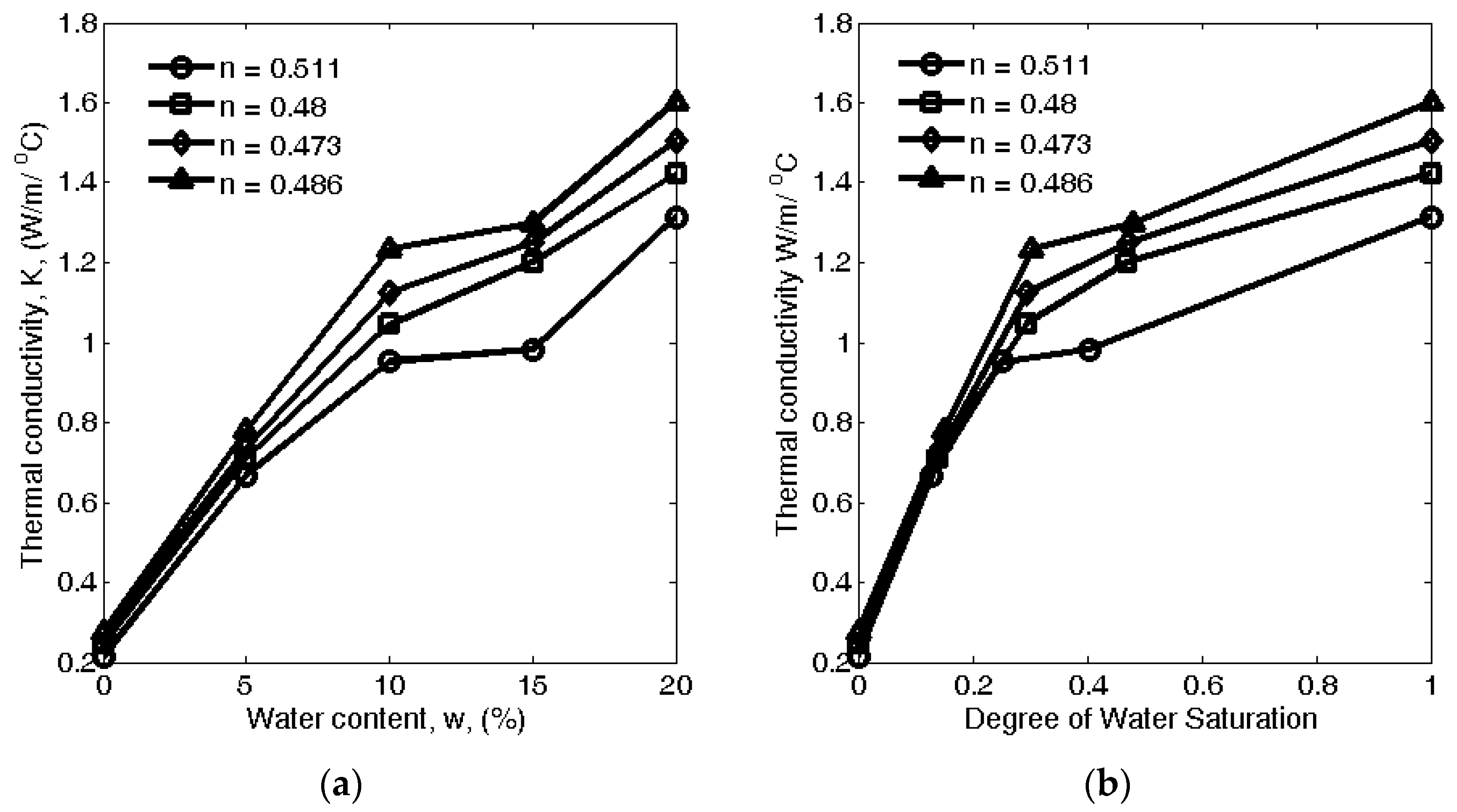
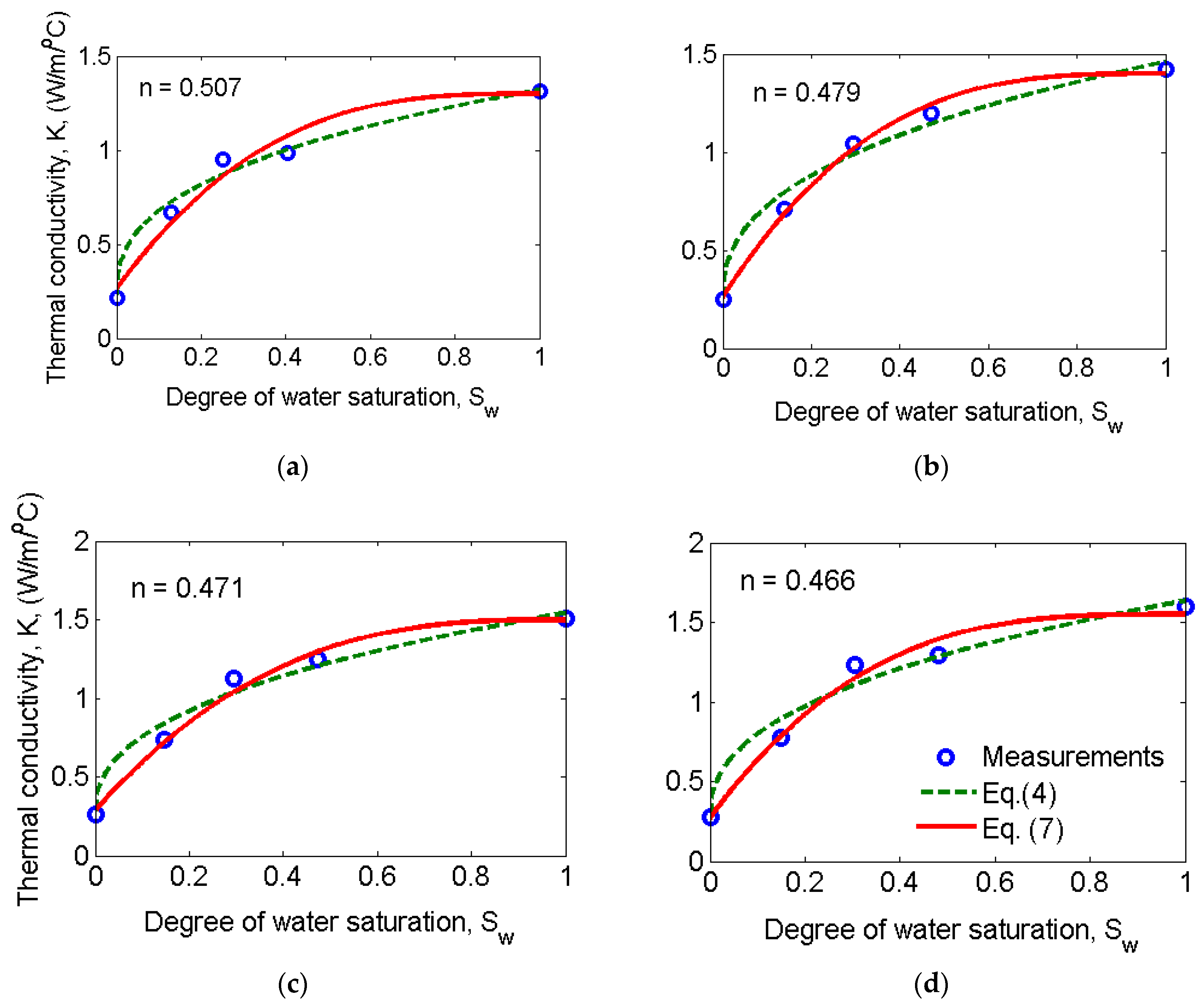
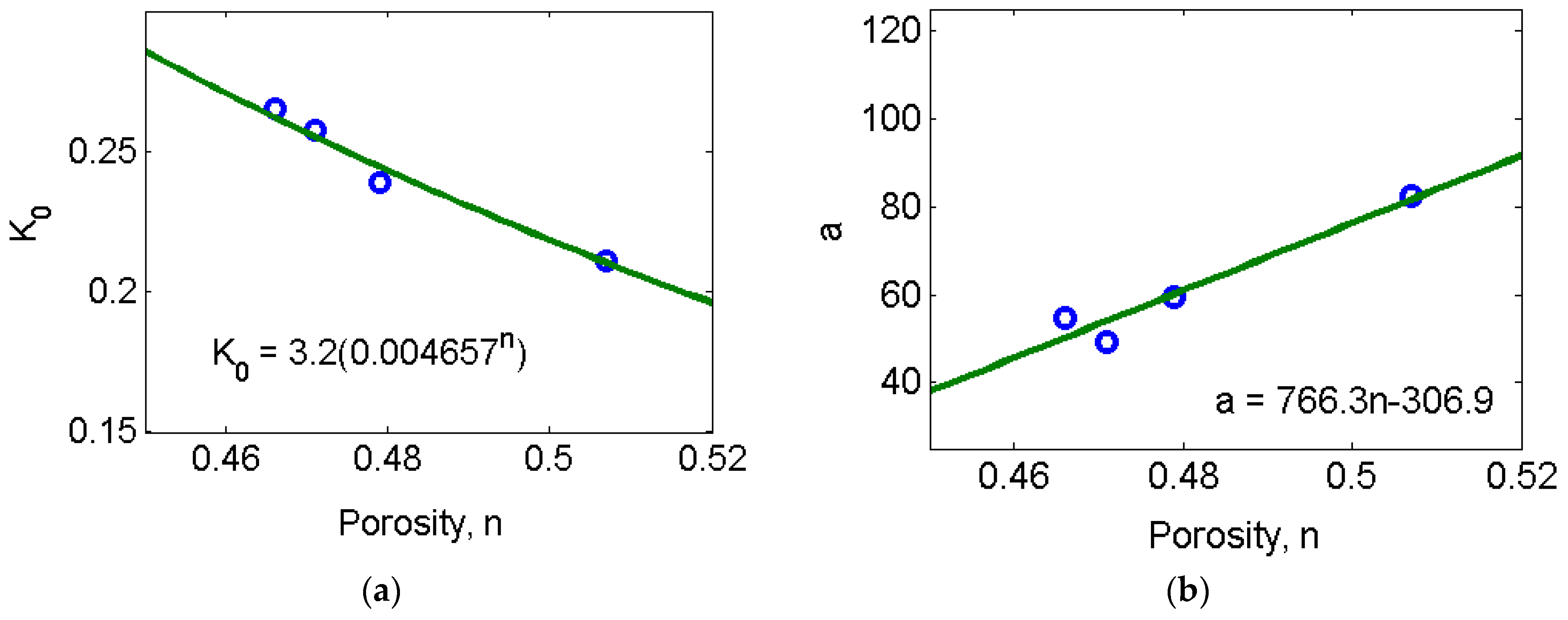
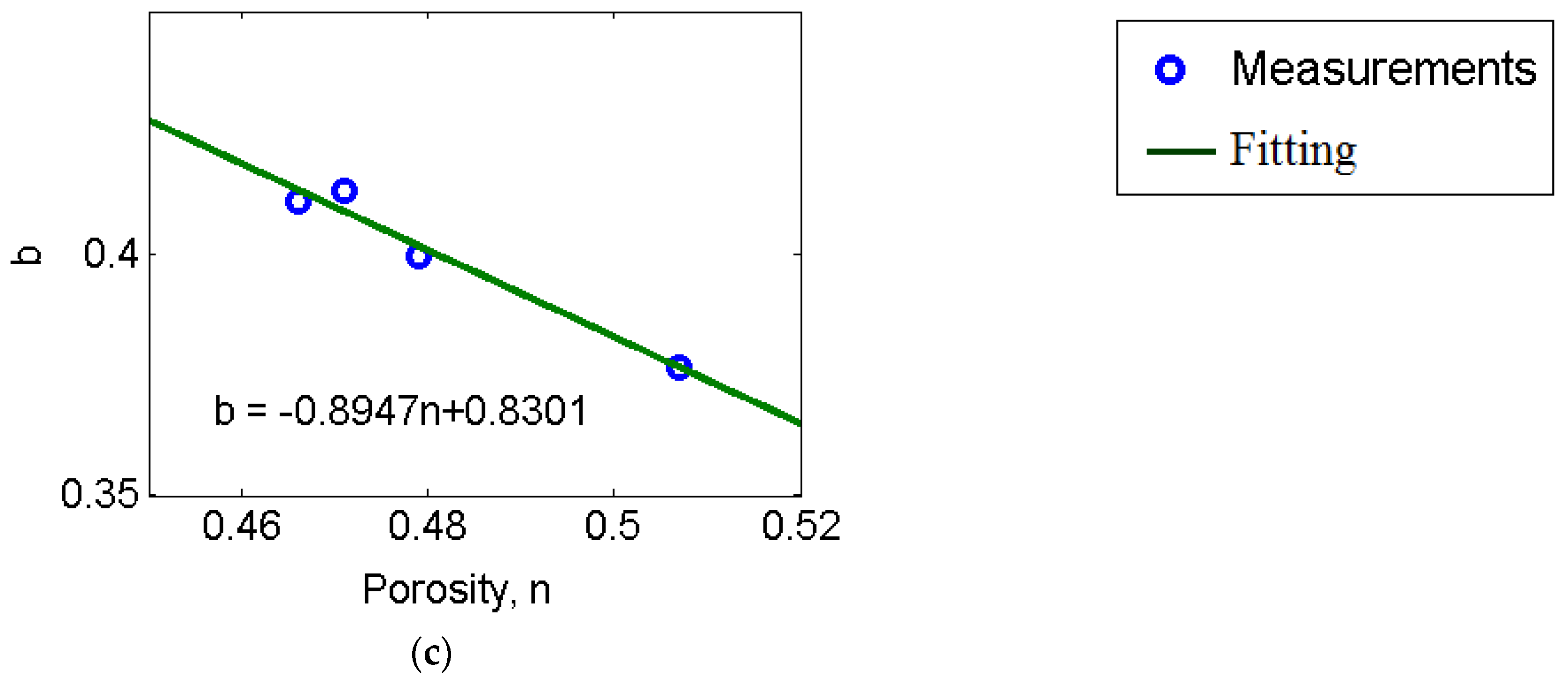
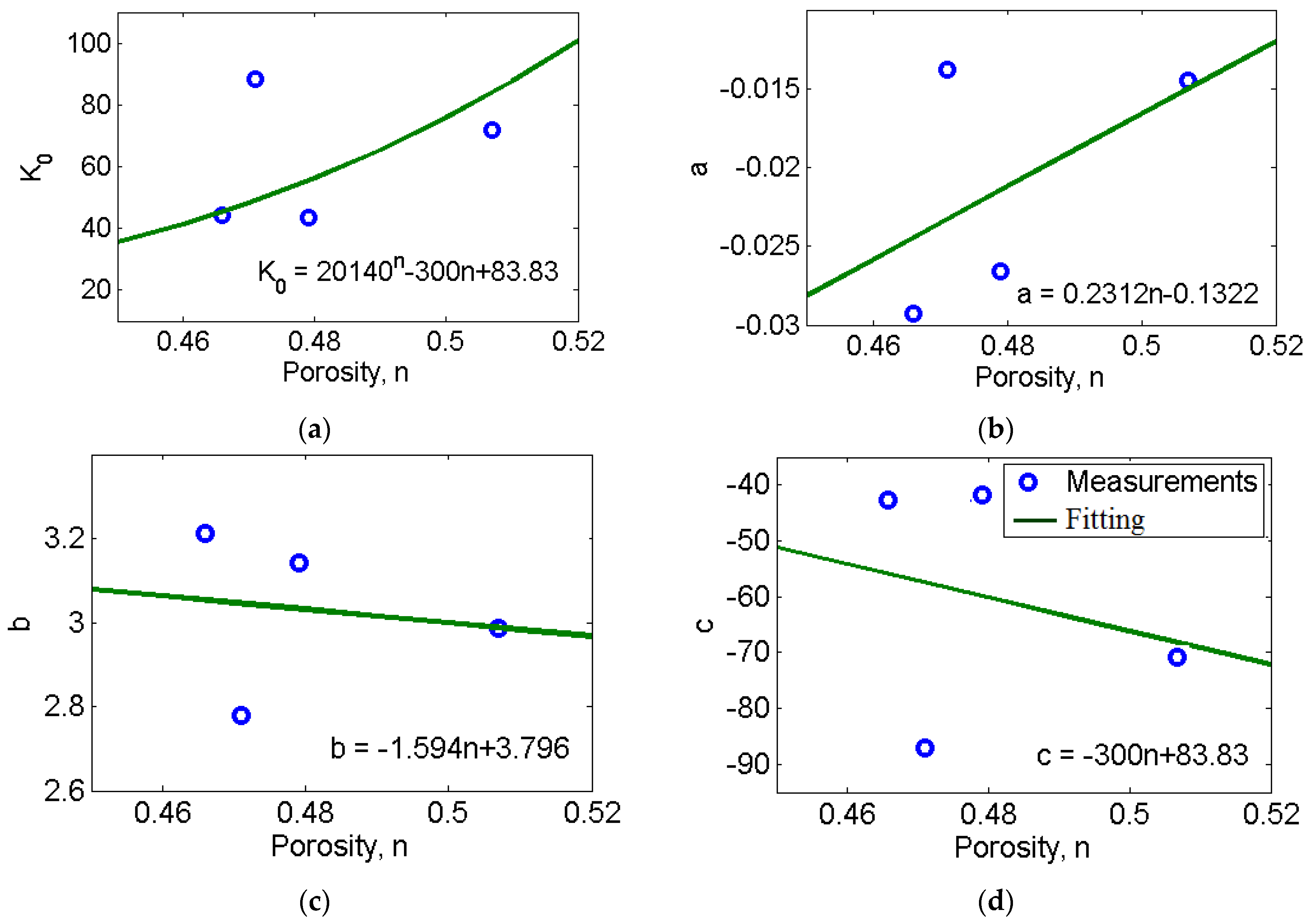
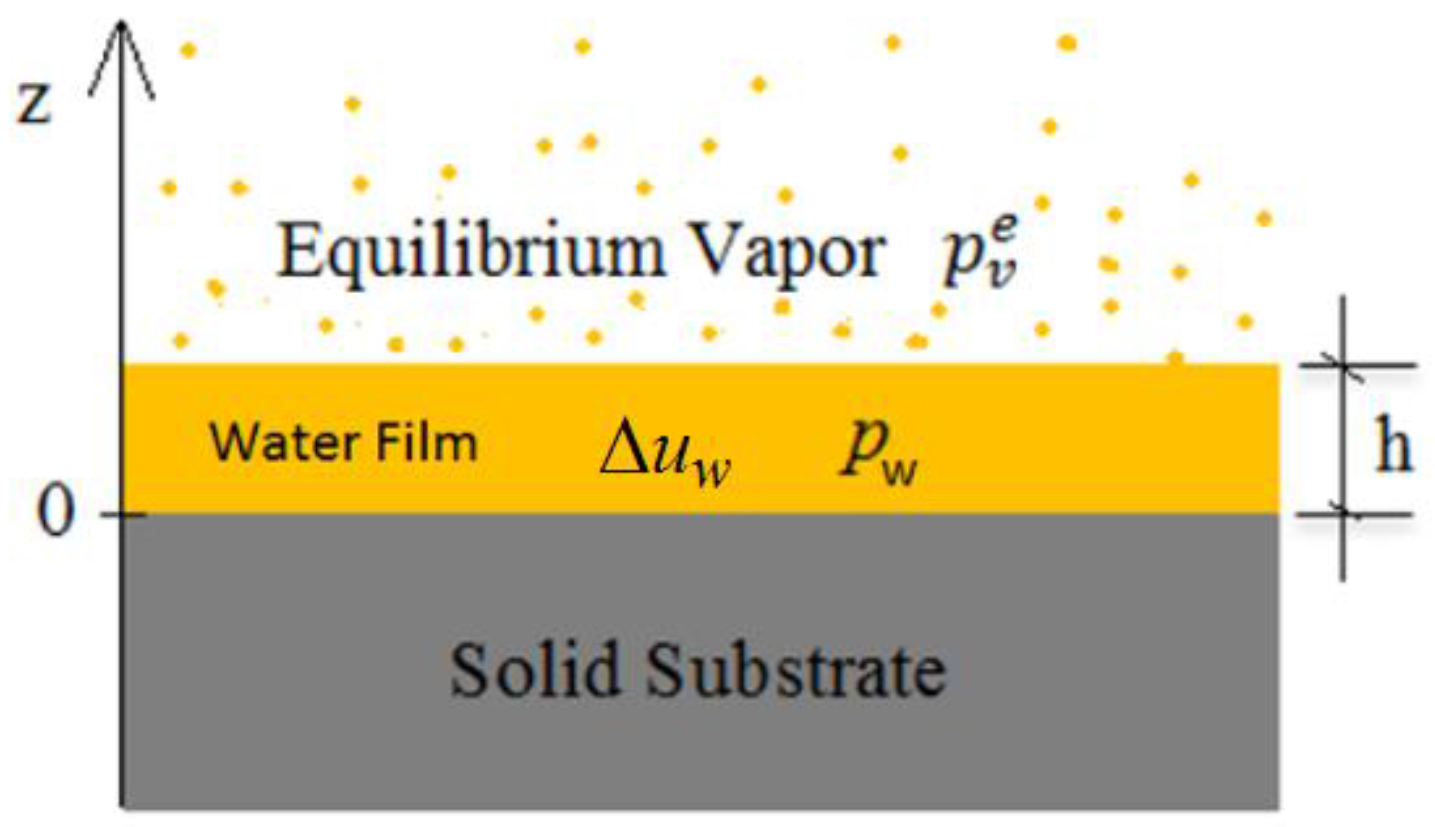
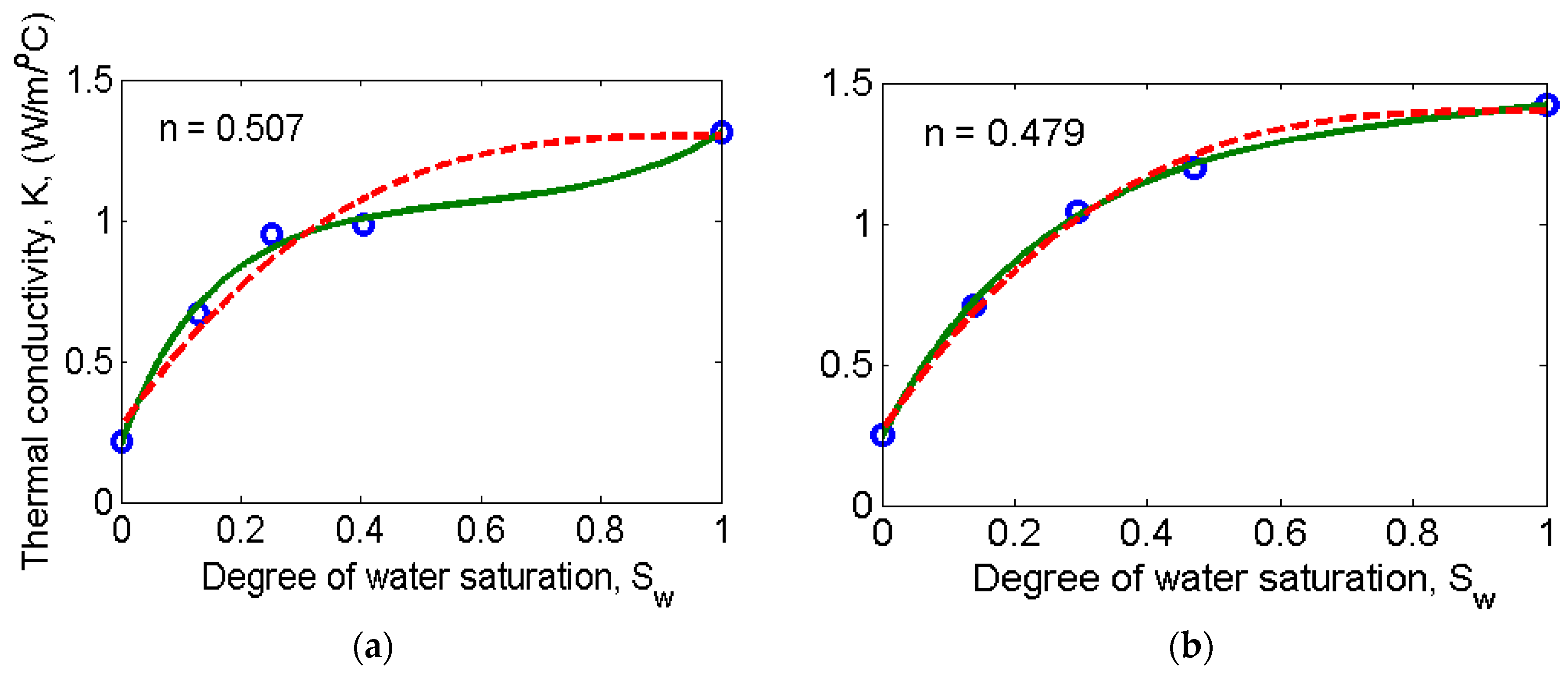
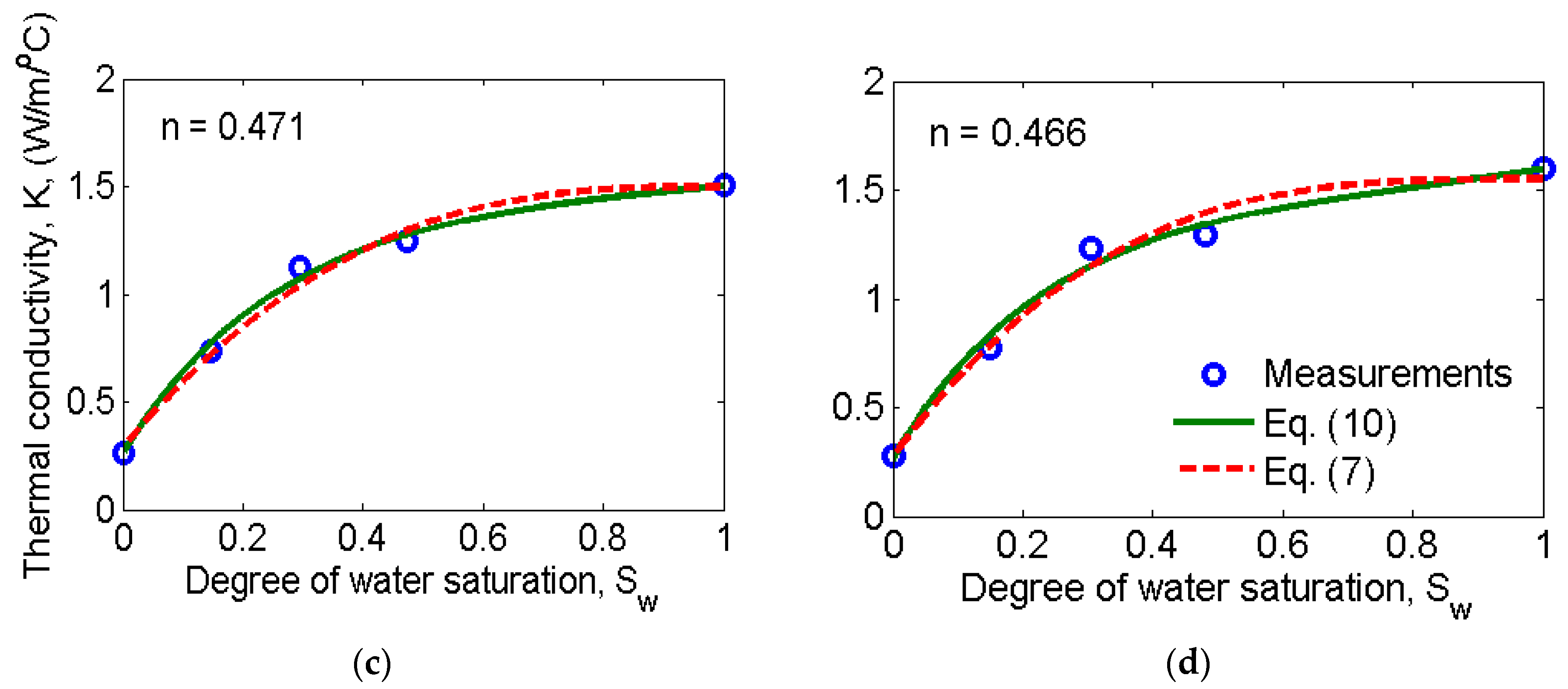
| Structure | Heating Wire | Thermocouple | Data Collector |
|---|---|---|---|
| Length (l): 167 mm Diameter (d): 2 mm l/d = 83.5 | Electrical resistance 22.46 Ω/m | T-type Accuracy: ±0.1 °C | UT325 Without the compensation at the cool end |
| The Order No. of the Needle Probe | The Standard Value | Measurement | Absolute Error * | Relative Error ** | |
|---|---|---|---|---|---|
| 20 °C | 40 °C | ||||
| 1 | 0.2872 | 0.2897 | 0.292 | 0.003 | 0.87% |
| 2 | 0.291 | 0.002 | 0.55% | ||
| 3 | 0.290 | 0.001 | 0.17% | ||
| 4 | 0.284 | −0.005 | −1.76% | ||
| 5 | 0.291 | 0.002 | 0.76% | ||
| Porosity, n | λ0 | K0 | α | β |
|---|---|---|---|---|
| 0.507 | 1.055 | 0.001064 | 5.495 | 6.679 |
| 0.479 | 1.335 | 0.02028 | 1.649 | 4.004 |
| 0.471 | 1.416 | 0.02598 | 1.469 | 3.818 |
| 0.466 | 1.443 | 0.01697 | 2.323 | 4.256 |
© 2017 by the authors. Licensee MDPI, Basel, Switzerland. This article is an open access article distributed under the terms and conditions of the Creative Commons Attribution (CC BY) license ( http://creativecommons.org/licenses/by/4.0/).
Share and Cite
Jin, H.; Wang, Y.; Zheng, Q.; Liu, H.; Chadwick, E. Experimental Study and Modelling of the Thermal Conductivity of Sandy Soils of Different Porosities and Water Contents. Appl. Sci. 2017, 7, 119. https://doi.org/10.3390/app7020119
Jin H, Wang Y, Zheng Q, Liu H, Chadwick E. Experimental Study and Modelling of the Thermal Conductivity of Sandy Soils of Different Porosities and Water Contents. Applied Sciences. 2017; 7(2):119. https://doi.org/10.3390/app7020119
Chicago/Turabian StyleJin, Hua, Yu Wang, Qiang Zheng, Hu Liu, and Edmund Chadwick. 2017. "Experimental Study and Modelling of the Thermal Conductivity of Sandy Soils of Different Porosities and Water Contents" Applied Sciences 7, no. 2: 119. https://doi.org/10.3390/app7020119





